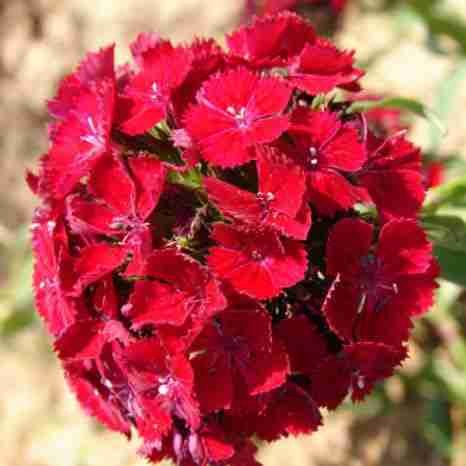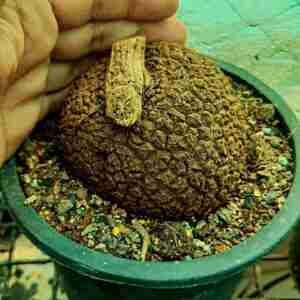Dianthus Sweet Williams Mix Seeds produce a vibrant and fragrant array of biennial or short-lived perennial flowers. Dianthus Sweet Williams Mix Seeds are known for their beautiful clusters of small, fringed flowers in shades of red, pink, white, and purple, often with eye-catching bi-colored or patterned blooms. These flowers are loved for their spicy, clove-like fragrance and their ability to attract pollinators, making them a popular choice for cottage gardens, borders, and cut flower arrangements.
Characteristics:
- Flowers: Sweet Williams feature dense clusters of small, five-petaled flowers that grow in rounded, compact bunches. The flowers come in a variety of colors, including red, pink, white, and purple, often with contrasting centers or fringed edges.
- Height: They typically grow between 12–24 inches (30–60 cm) tall, depending on growing conditions, making them ideal for borders and garden beds.
- Growth Habit: Sweet Williams form upright, bushy clumps of foliage, with narrow, lance-shaped leaves. The flowers grow on tall stems, which makes them excellent for cutting.
Sowing and Growing Instructions:
- Light: Sweet Williams thrive in full sun but can tolerate partial shade. For best flower production, plant them in a spot that receives at least 6 hours of sunlight daily.
- Soil: They prefer well-draining, fertile soil with a neutral to slightly alkaline pH. If needed, amend the soil with organic matter to improve drainage.
- Sowing:
- Indoors: Start seeds indoors 6–8 weeks before the last frost. Sow seeds in trays or pots filled with a well-draining seed-starting mix, lightly covering them with soil. Keep the soil moist but not soggy, and place the trays in a bright, warm area. Seeds should germinate within 10–14 days.
- Outdoors: After the danger of frost has passed, transplant seedlings into the garden, spacing them about 8–12 inches (20–30 cm) apart. You can also direct sow seeds in late spring or early summer.
- Watering: Water regularly but allow the soil to dry out slightly between waterings. Sweet Williams do not like soggy soil, so ensure proper drainage.
- Temperature: These plants prefer cool to moderate temperatures, thriving in the range of 50–75°F (10–24°C). They can tolerate light frosts and may even bloom earlier in cooler climates.
Blooming and Care:
- Flowering: Sweet Williams typically bloom in their second year if grown from seed, with a long flowering period that begins in late spring and lasts into summer. Some varieties may bloom in the first year if started early.
- Deadheading: Removing spent flowers will encourage more blooms and help extend the flowering period.
- Fertilizing: Fertilize Sweet Williams with a balanced, slow-release fertilizer in the spring to promote healthy growth and flowering. Avoid excessive fertilizing, as it can lead to lush foliage but fewer flowers.
Benefits:
- Fragrant Flowers: The spicy, clove-like fragrance of Sweet Williams adds an aromatic element to gardens and is especially noticeable on warm, sunny days.
- Pollinator Friendly: These flowers attract bees, butterflies, and other beneficial pollinators, making them a great addition to pollinator-friendly gardens.
- Long Blooming Period: Sweet Williams bloom for an extended period from late spring to summer, adding continuous color to garden beds and borders.
- Cut Flowers: The tall, sturdy stems and dense flower clusters make Sweet Williams excellent for cutting and using in floral arrangements.
Uses:
- Borders and Flower Beds: Sweet Williams are perfect for planting along garden borders or in mixed flower beds, where their upright growth and colorful blooms can be appreciated.
- Cottage Gardens: Their old-fashioned charm and fragrance make Sweet Williams a natural fit for cottage-style gardens.
- Containers: While they are often planted in beds, Sweet Williams can also thrive in containers, making them suitable for patios and small spaces.
- Cut Flowers: Their long-lasting, fragrant blooms make them ideal for fresh-cut floral arrangements.
Care Tips:
- Deadheading: Regularly deadhead spent blooms to encourage continuous flowering and to keep the plants looking neat.
- Pest and Disease Control: Sweet Williams are generally pest-resistant but may occasionally be affected by aphids or slugs. Ensure good air circulation to prevent fungal diseases like powdery mildew, and avoid overhead watering.
- Biennial Nature: Since Sweet Williams are biennials, they will typically bloom in their second year. However, if you want continuous blooms year after year, consider planting them in successive years.
The Dianthus Sweet Williams Mix is an excellent addition to gardens, bringing vibrant color, fragrance, and the charm of a classic cottage garden favorite. With minimal care, these beautiful flowers will thrive, attracting pollinators and providing a colorful display from late spring through summer.









Reviews
There are no reviews yet.